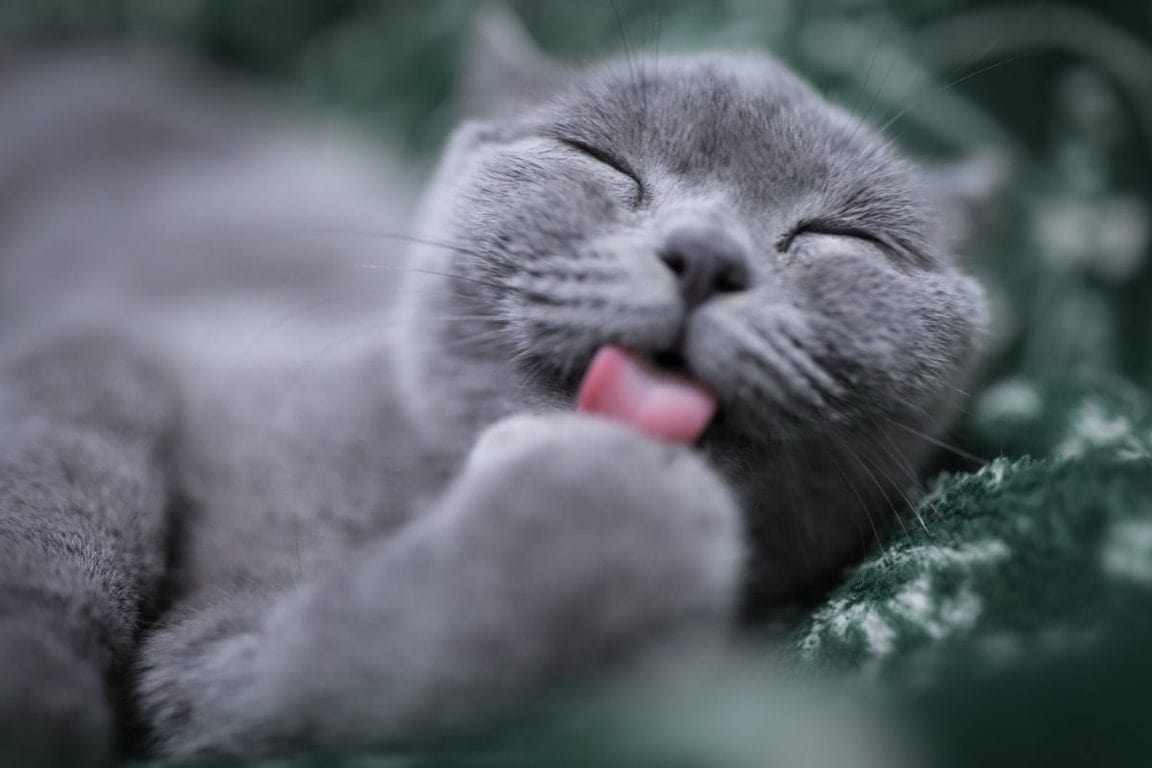Do Cats Work Well in a Pack? Myths vs Reality
Do you understand the social structure of a cat? Do cats work well in a pack? The Felidae or feline household are singular predators and (with the exception of lions) do not live in socially structured groups.. Tropika Club shares with you on whether cats work well in a pack, like dogs.
Table of Contents
No Time to Read? Here’s a Snappy Summary of This Article
- Myth: Cats are Solitary Animals: Contrary to the myth, cats can thrive in social groups and form strong bonds with other feline companions.
- Reality: Multi-Cat Households are Possible: Cats can coexist harmoniously in multi-cat households, provided there is proper socialization and gradual integration.
- Myth: Cat Packs Have a Strict Hierarchy: While some cats may establish hierarchies, not all feline groups operate this way, and many can maintain peaceful coexistence.
- Reality: Cat Communication is Complex: Cats communicate through body language and vocalizations, which helps them establish and maintain relationships within a pack.
- Myth: Pack Life Causes Aggression: While territorial disputes can occur, proper introduction and management can minimize aggression and promote positive interactions.
- Reality: Benefits of Cat Companionship: Cat packs can provide emotional support, reduce stress, and enhance the overall well-being of feline members.
Introduction to Cats and Their Social Structures
However, while the wildcat ancestors of domestic cats are singular animals, the social behaviour of domestic felines is more variable depending mainly on the density of felines and the schedule of food sources. Our pet feline, Felis catus has actually proved to be an incredibly versatile types, and while maintaining its roots as a solitary hunter, in a number of situations (both natural and artificial) will adjust to group-living through the development of social structures. Broadly speaking, the living plans of free-living domestic cats can be divided into those in which women form small groups, loosely resembling a pride of lions, and those that stay singular with private territories (more common of most wild felids).

The importance of territory
For a species where individuals are essentially singular hunters, it is essential for cats to develop an area (ie searching area), and that this is defined in such a way as to usually prevent conflict with other cats (for the survival of the species). Cats, therefore, mark their territories using scent derived from facial glands, urine, faeces, and anal glands. This territorial marking, together with the incredibly delicate sense of smell, helps felines to communicate successfully and to reduce direct dispute in between themselves.
A feline’s area consists of a core location, or den, where it feels safe enough to sleep, consume, play and potentially take pleasure in social interaction. This forms the center of the territory which is the area beyond the core area that the cat actively defends against intrusion from others. Beyond this lies the home or hunting variety that constitutes the level of the location over which the cat will wander.
In the wild, territories may overlap with ‘neutral locations’ where felines may greet and interact with each other. If an unusual feline intrudes into another feline’s territory, this will typically provoke an aggressive interaction to go after off the cat, first of all through staring, hissing and roaring and, if that is ineffective, through a short, loud violent attack.

Colony living
Feral felines (cats which live without help from guy) can and will form small colonies based around available food sources. This does not inevitably occur, and some will live singly, but it is not unusual for little groups of co-operating women and kitties (matrilinear colonies) to develop. While there may be a really loose supremacy hierarchy in these groups, the relationships are complex and they do not form a synergistic hierarchy as, for instance, would take place in pet dogs. Relationships are intricate, with more powerful affiliative relationships between some cats and less association with others– this might in part be affected by how related they are, age, sex etc. Nevertheless, they establish neither a social survival method nor a pack mentality and they continue to be solitary hunters. Thus felines are not ‘load’ animals but have the ability to adapt to form social groups.
Where social groups of felines do exist, they appear just to work well when the members of the group recognize and when there is no competition over food or other resources. Felines can form strong social relationships with familiar individuals, and especially between kittycats in the same litter and in between kittycats and their mother. However, in feral cat nests, kitties might typically be nursed (suckled) by more than one lactating queen, and this in itself may help in the formation of social bonds at a young age. Undoubtedly kitties might likewise try to draw from non-lactating queens which may also assist in the development of social bonds.
There might be a bigger ‘main’ nest of women connected with the significant food source and smaller sized ‘peripheral’ groups that develop around the main colony that, while still have access to the food source, have poorer gain access to, poorer health and poorer reproductive performance.
Male felines
Male cats are not frequently part of the small nests, and they tend to exist on the periphery with large territories that might overlap numerous groups of females. The female groups/colonies generally have fairly more discrete and smaller territories although the size of female territories varies enormously, most likely reliant mostly on the abundance of food and the number/density of women in the group. Studies have recommended approximately a 1000-fold variation in ‘home variety’ size in different areas (eg, 0.27 ha for a city-living feral cat in Jerusalem to 170ha for a cat in the Australian bush). Male territories might or might not overlap, however typically, there is substantial overlap (more so than in between female groups) and their size is proportional to the schedule of food and also the density of females present. Dominant males probably have bigger areas, and in general, males might have a territory equivalent to, or approximately 10 times bigger, than that of the female groups (typically 3 times larger). The incident of numerous little groups of females not too extensively dispersed appears to favour bigger male territories.
Aggression
Aggressiveness is not typical within the female nests– strong familiarity and relatedness in between females assist to keep aggressiveness to a minimum. Aggression most commonly occurs as male kitties reach sexual maturity and are excluded from the group, or in between males and women as the tom ‘patrols’ his territory. Toms are seldom aggressive towards women, but women, unless sexually responsive, will typically be aggressive to males that wander too close. However, amicable behaviour between females and toms will also happen (such as allogrooming and ‘welcoming’ behaviour (tail up, sniff noses, rub heads), particularly in between females and males where there is substantial familiarity. Fully grown males communicate differently, and this is normally characterised by agonistic interaction, avoidance or tolerance, and not by friendly interactions.
As felines have developed mainly as singular hunters without the requirement for complex social interactions, they appear to have fairly limited capability for complex visual signalling that happens in numerous other animals that do exist in social groups. Therefore they are less able to signal appeasement to other felines which means that in circumstances of conflict there is a much higher possibility of fighting.
Conclusion
Cats are solitary hunters and do not live in socially structured groups except for lions. However, domestic cats have proved to be an incredibly versatile species and will adjust to group-living through the development of social structures. The living arrangements of free-living domestic cats can be divided into those in which females form small groups, loosely resembling a pride of lions, and those that stay singular with private territories (more common of most wild felids).
For a species where individuals are essentially solitary hunters, it is essential for cats to develop an area (i.e., searching area), and that this is defined in such a way as to usually prevent conflict with other cats (for the survival of the species). Cats mark their territories using scent derived from facial glands, urine, faeces, and anal glands. This territorial marking helps felines to communicate successfully and to reduce direct dispute in between themselves.
Feral cats can and will form small colonies based around available food sources. This does not inevitably occur, and some will live singly, but it is not unusual for little groups of co-operating women and kitties (matrilinear colonies) to develop.
In conclusion, while cats are solitary animals by nature, they can adjust to group-living through the development of social structures. However, it is important to note that they are not pack animals like dogs.

Frequently Asked Questions (FAQ)
Q: Do cats live in socially structured groups?
A. The Felidae or cat family are solitary predators and (with the exception of lions) do not live in socially structured groups.
Q: Can domestic cats adjust to group-living?
A. Domestic cats have proved to be an incredibly versatile species and will adjust to group-living through the development of social structures.
Q: What is the importance of territory for cats?
A. For a species where individuals are essentially solitary hunters, it is important for cats to establish a territory (i.e., hunting territory), and that this is defined in such a way as to generally avoid conflict with other cats (for the survival of the species).
Q: Do feral cats form colonies?
A. Feral cats can and will form small colonies based around available food sources. This does not inevitably happen, and some will live singly, but it is not uncommon for small groups of co-operating females and kittens (matrilinear colonies) to develop.
Meanwhile, Check Out Tropika Club’s Ecosystem of Websites

Tropika Club Magazine – Tropika Club Magazine is a Singapore-based publication that features articles on a wide range of topics with a focus on local businesses and content for the region. The magazine emphasizes supporting local businesses through its #SupportLocal initiative, which includes coverage of everything from neighborhood hawker stalls to aesthetic clinics in town. In addition to highlighting local businesses, Tropika Club Magazine also covers a variety of local content, including beauty, lifestyle, places, eats, and what’s on in Singapore and the Asia Pacific region.
Tropika Club Deals – Tropika Club Deals is a leading online deals and voucher shopping site in Singapore, offering amazing discounts on beauty, wellness, and fitness products and services. It’s the perfect platform for customers who want to discover the best deals without having to commit to a specific appointment date and time. These deals are available at major beauty stores, facial salons, hair salons, and other brands in Singapore, with no minimum spend required. Choose from guaranteed discounted deals in the categories of hairstyling, hair removal, facial & aesthetics, body slimming, brows & lashes, nails & makeup, massage & spa or fitness & wellness. Tropika Club Deals is also ideal for customers who want to buy vouchers as gifts or to use for the future. So whether you’re looking to save money on your next haircut or want to treat yourself to a relaxing massage, Tropika Club Deals has got you covered with the best voucher and coupon deals in Singapore!




